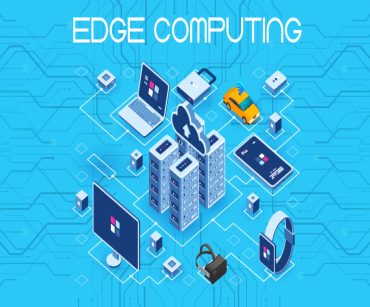Possible components of edge include:
- Edge devices
- Network edge
- On-premises infrastructure
Loading
Nullam dignissim, ante scelerisque the is euismod fermentum odio sem semper the is erat, a feugiat leo urna eget eros. Duis Aenean a imperdiet risus.


Edge computing is a distributed computing model in which computing takes place near the physical location where data is being collected and analyzed, rather than on a centralized server or in the cloud. This new infrastructure involves sensors to collect data and edge servers to securely process data in real-time on site, while also connecting other devices, like laptops and smartphones, to the network.
It offers some unique advantages over traditional models, where computing power is centralized at an on-premise data center. Putting compute at the edge allows companies to improve how they manage and use physical assets and create new interactive, human experiences. Some examples of edge use cases include self-driving cars, autonomous robots, smart equipment data and automated retail.

Edge computing can be incorporated into a wide variety of applications, products, and services.

